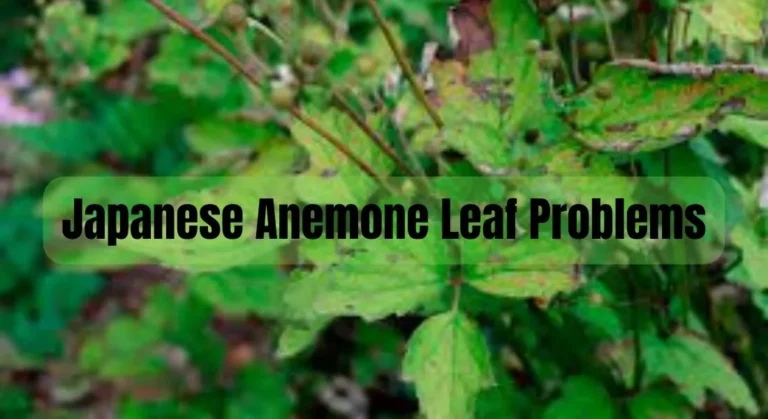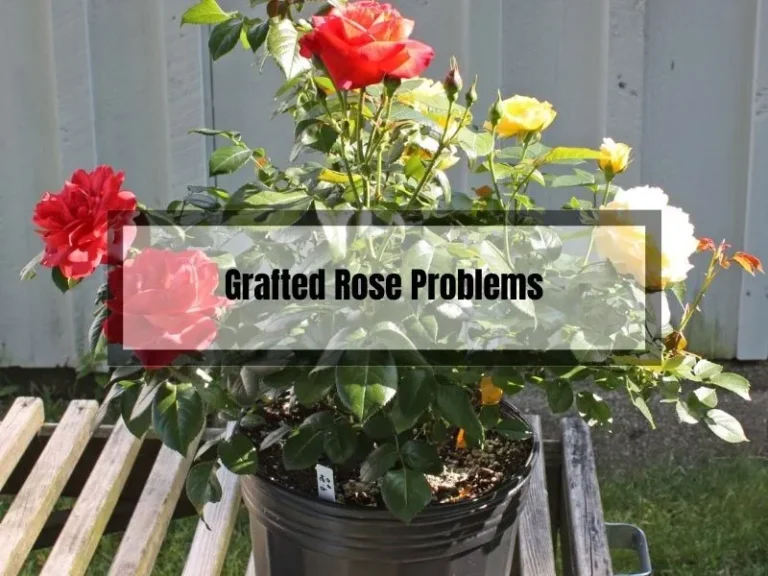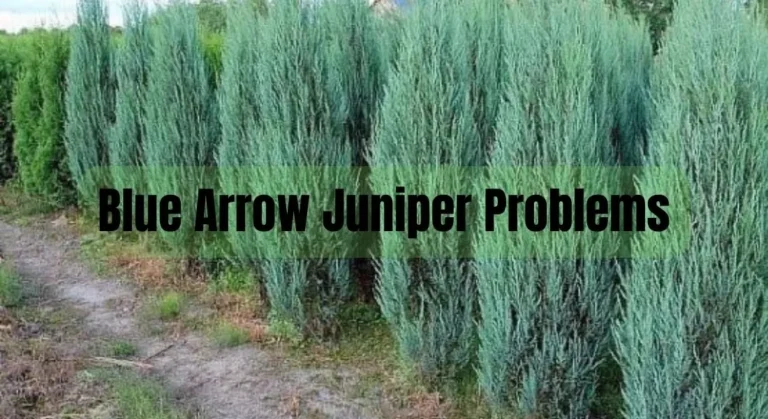Sweet Pea Leaf Problems: Your Guide to a Healthy and Vibrant Garden
Hey there, fellow garden enthusiasts! Sweet peas are one of my favorite flowers. They’re not only beautiful, but they also have a delightful scent that’s simply irresistible.
However, growing these charming plants can sometimes be a bit of a challenge, especially when it comes to dealing with common leaf problems. In today’s post, I’ll share my tips on identifying and addressing sweet pea leaf issues, so you can enjoy a stunning and healthy garden.

Sweet Pea Leaf Problems
First things first, let’s define what sweet pea leaf problems are. Sweet pea leaf problems refer to any issues affecting the leaves of the sweet pea plant. These issues can range from discoloration and spots to wilting and curling. Sweet pea leaf problems can be caused by a variety of factors, including pests, diseases, and environmental factors.
The first step in addressing sweet pea leaf problems is identifying them. Some common signs to look out for include yellowing or browning of the leaves, spots or discoloration, wilting, and curling. If you notice any of these signs, it’s essential to investigate further to determine the cause of the problem.
Common Causes of Sweet Pea Leaf Problems
Pests
One of the most common causes of sweet pea leaf problems is pests. Some common pests that can cause issues with sweet pea leaves include aphids, spider mites, and thrips. These pests can cause damage to the leaves by feeding on them, which can lead to discoloration, wilting, and curling.
To identify these pests, you should look for signs such as tiny insects on the leaves, webbing, or discoloration. If you notice any of these signs, you can use organic or chemical solutions to address the issue. For example, you can use neem oil or insecticidal soap to control aphids and spider mites.
Diseases
Another common cause of sweet pea leaf problems is diseases. Some common diseases that can affect sweet pea leaves include powdery mildew, rust, and leaf spot. These diseases can cause discoloration, spots, and wilting of the leaves.
To address these diseases, it’s essential to identify them correctly. For example, powdery mildew appears as a white, powdery substance on the leaves, while rust appears as orange or brown spots. Leaf spot, on the other hand, appears as brown or black spots on the leaves.
To treat these diseases, you can use organic or chemical solutions. For example, you can use a fungicide to control powdery mildew or rust. However, prevention is always better than cure. To prevent these diseases, ensure that your sweet pea plants are well-ventilated and not overcrowded. Also, avoid watering the leaves of the plant, as this can create a damp environment that is conducive to the growth of these diseases.
Environmental Factors
Environmental factors can also cause sweet pea leaf problems. For example, high temperatures, low humidity, and poor soil conditions can cause issues with the leaves. High temperatures can cause the leaves to wilt, while low humidity can cause them to dry out. Poor soil conditions can also lead to nutrient deficiencies, which can cause discoloration and spots on the leaves.
To address these environmental factors, you can take various measures. For example, you can provide shade to your sweet pea plants during hot weather to prevent wilting. You can also provide adequate water and nutrients to ensure that the soil conditions are optimal for plant growth.
Yellowing Leaves
Description of the problem
Yellowing leaves are a common issue for sweet peas. This problem is characterized by a color change from green to yellow, which can appear in different patterns on the leaves. It’s essential to identify the root cause to address the issue effectively.
Causes
There are several possible causes for yellowing leaves on sweet peas, including:
- Nutrient deficiency: A lack of essential nutrients, such as nitrogen, potassium, or magnesium, can cause leaves to turn yellow.
- Overwatering or poor drainage: If your sweet peas receive too much water or the soil doesn’t drain well, the roots can suffocate, leading to yellow leaves.
- Root rot or other diseases: Fungal or bacterial infections affecting the roots can also cause the leaves to turn yellow.
Solutions
Depending on the cause, there are different solutions to address yellowing leaves:
- Adjusting soil nutrients: Test your soil and add the necessary nutrients to ensure your sweet peas have everything they need to grow.
- Improving watering habits: Make sure not to overwater your sweet peas, and check that the soil drains properly.
- Treating root rot or diseases: If a disease is causing the issue, you may need to use fungicides or other treatments to help your sweet peas recover.
Spots and Blotches
Description of the problem
Another common issue with sweet pea leaves is the appearance of spots or blotches. These can be circular, angular, or irregular in shape and come in various colors, such as brown, black, or gray. Identifying the cause is crucial for effective treatment.
Causes
Spots and blotches on sweet pea leaves can be caused by:
- Fungal infections: Anthracnose, Cercospora leaf spot, or rust are examples of fungi that can cause spots on sweet pea leaves.
- Bacterial infections: Pseudomonas or Xanthomonas leaf spots are examples of bacterial infections that can cause leaf blotches.
- Insect damage: Aphids, spider mites, or thrips can also lead to spotted leaves.
Solutions
Here’s how you can address spots and blotches on sweet pea leaves:
- Fungicides or bactericides: If a fungal or bacterial infection is the culprit, you’ll need to apply appropriate treatments to get rid of the problem.
- Pruning infected areas: Remove any affected leaves or stems to prevent the infection from spreading to healthy parts of the plant.
- Implementing pest control methods: If insects are causing the issue, consider using insecticidal soaps, neem oil, or other eco-friendly pest control measures.
Wilting and Curling Leaves
Description of the problem
Wilting and curling leaves can be frustrating for any gardener. This issue presents itself as leaves drooping, curling, or becoming distorted in shape. Identifying the root cause is essential for effective treatment.
Causes
The causes of wilting and curling leaves include:
- Temperature stress: Extreme heat or cold can cause leaves to wilt or curl.
- Water stress: Overwatering or underwatering can lead to wilting or curling leaves.
- Pests and diseases: Aphids, powdery mildew, or Fusarium wilt are examples of pests and diseases that can cause this issue.
Solutions
To address wilting and curling leaves, you can:
- Adjust temperature and watering conditions: Make sure your sweet peas are in a location with a suitable temperature, and water them according to their needs.
- Treating pests or diseases: If pests or diseases are causing the problem, apply appropriate treatments to help your plants recover.
- Providing shade or protection from extreme temperatures: Use shade cloth, mulch, or other protective measures to shield your sweet peas from harsh conditions.
Preventing Sweet Pea Leaf Problems
Prevention is always better than cure, so let’s talk about how to avoid these common sweet pea leaf problems in the first place.
Proper Planting Techniques
To give your sweet peas the best start, make sure you:
- Choose the right location: Sweet peas need full sun and well-draining soil to thrive.
- Plant at the correct depth and spacing: This helps prevent overcrowding and ensures proper root growth.
Regular Maintenance
A little TLC goes a long way! Keep your sweet peas healthy by:
- Watering properly: Be mindful of the frequency and amount of water your sweet peas need to avoid overwatering or underwatering.
- Fertilizing appropriately: Choose the right fertilizer for your sweet peas, and follow the recommended application rates and frequency.
- Pruning and staking: Promote air circulation and support plant growth by pruning as needed and using stakes or other supports.
Pest and Disease Management
Keep an eye out for pests and diseases by:
- Monitoring your plants: Regularly inspect your sweet peas for signs of pests or diseases.
- Identifying common issues: Learn about the common pests and diseases that affect sweet peas so you can spot them early.
- Implementing control measures: Use cultural, biological, and chemical control options as needed, and be proactive about preventing resistance and secondary issues.
Importance of Leaf Health
Maintaining healthy sweet pea leaves is essential for plant growth and flower production. Leaves are responsible for photosynthesis, which is the process by which plants convert sunlight into energy.
Without healthy leaves, your sweet pea plant will not be able to produce the energy it needs to grow and produce beautiful flowers. Therefore, it’s essential to take care of your sweet pea leaves to ensure that your plant remains healthy and produces the best blooms possible.
FAQs
How can I tell if my sweet pea plant has a nutrient deficiency?
Signs of nutrient deficiency include yellowing leaves, stunted growth, or poor flowering. It’s essential to test your soil to determine which nutrients are lacking and address the issue accordingly.
What should I do if my sweet pea leaves have spots or blotches?
First, determine the cause of the spots or blotches, which could be a fungal or bacterial infection or insect damage. Then, apply the appropriate treatment, such as fungicides, bactericides, or pest control measures.
How do I prevent pests and diseases from affecting my sweet pea plants?
Regularly inspect your plants, maintain proper planting techniques and plant care, and implement control measures as needed to keep pests and diseases at bay.
Can sweet pea plants recover from leaf problems?
Yes, sweet pea plants can often recover from leaf problems if you address the issue early and provide the appropriate treatment. However, the recovery process may take some time, and in severe cases, the plant may not fully bounce back. The key is to be vigilant and act quickly when you notice signs of trouble.
Conclusion
Addressing sweet pea leaf problems can be challenging, but it’s essential to keep your garden healthy and vibrant. By identifying the issues, understanding their causes, and applying the right solutions, you can help your sweet peas bounce back and continue to thrive. And remember, preventative measures and proper plant care are just as important as addressing existing problems.
So, my fellow gardeners, I encourage you to apply this information to your own gardens and enjoy the beauty and fragrance of healthy sweet pea plants. With a little care and attention, your sweet peas will reward you with their delightful presence for years to come. Happy gardening!
Related Posts:






